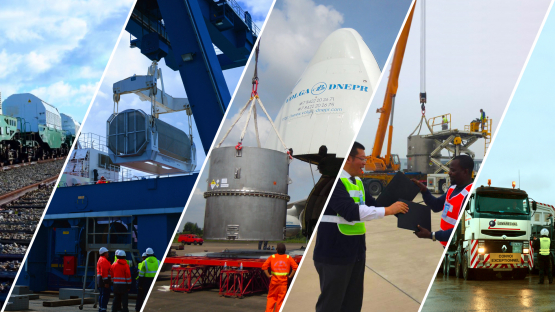Safety and security during the transport of nuclear and radioactive materials represent two sides of the same coin: To prevent harming the environment and the public, they should be addressed in tandem. This is the focus of this week’s International Conference on the Safe and Secure Transport of Radioactive Materials, starting today.
More than 20 million shipments of nuclear and radioactive material occur per year globally, in air, on the seas, on railways and roads.
Safety during transport is enhanced through compliance with the IAEA’s safety standards and the national transport safety regulatory requirements derived from them. Similarly, security, to protect against theft and sabotage involving nuclear and radioactive materials during transport, is achieved through the application of international instruments and IAEA Nuclear Security Series guidance.
“Transport is a crucial moment. It’s when nuclear and radioactive materials are on the move, before being able to reach their destination reliably and on time,” said IAEA Director General Rafael Mariano Grossi in his opening remarks. “Our focus at this conference is to bring safety and security together. Even though they share the goal of protecting people and the environment, the two sometimes require different approaches in a way that they complement rather than contradict each other.”
While noting the achievements of this field – to date, there has not been a single report of an injury caused by the radioactive nature of material in transit, – Mr Grossi urged the participants joining this week’s virtual conference to remain vigilant as the number of theft incidents occurring during transport account for almost half of the total number of radioactive material theft incidents.
“Between 1993-2021, Member States reported to the IAEA Incident and Trafficking Database 630 thefts of radioactive material, out of which 310 occurred during transport. In 57% of these cases, the stolen radioactive material has yet to be recovered,” said David Ladsous, Head of the IAEA’s Transport Security Unit.
The objective of the conference is to provide an opportunity for Member States to further develop their understanding of the issues relating to transport safety, transport security and the interface between, to inform their work to develop or strengthen their transport safety and security regulatory infrastructures.
Over 600 participants have registered to attend the conference.
The programme covers six main themes: international framework for transport safety and security, national regulatory framework for the transport of nuclear and radioactive materials, industry perspective of implementing transport safety and security regulatory requirements, sustainability of safety and security regime, emerging technologies, and international cooperation and regional approaches. An interactive exercise is planned for four regional meetings: one each for Africa, Europe, Latin America and Asia and the Pacific. This will include roles for a shipping, a receiving and a transit country, and participants will be asked to discuss safety and security aspects when preparing a fictitious shipment, transporting it, and ultimately receiving it at its final destination.
“Transport of radioactive and nuclear materials is an activity that takes place in the public domain,” said Stephen Whittingham, Unit Head of Transport Safety at the IAEA. “Transport safety and security is very much a team effort, at the international level,” said Whittingham. “We want to make sure that irrespective of their infrastructure, countries do not feel that they are on their own. They can rely on us to help.”
To this end, the IAEA has developed e-learning modules on transport seen from a safety, as well as a security perspective. The material related to safety in transport provides training on all the requirements set out in IAEA SSR-6 (Rev.1). The modular training programme is currently available in Chinese, English and Spanish and is planned for translation to Arabic, French and Russian by 2025.






